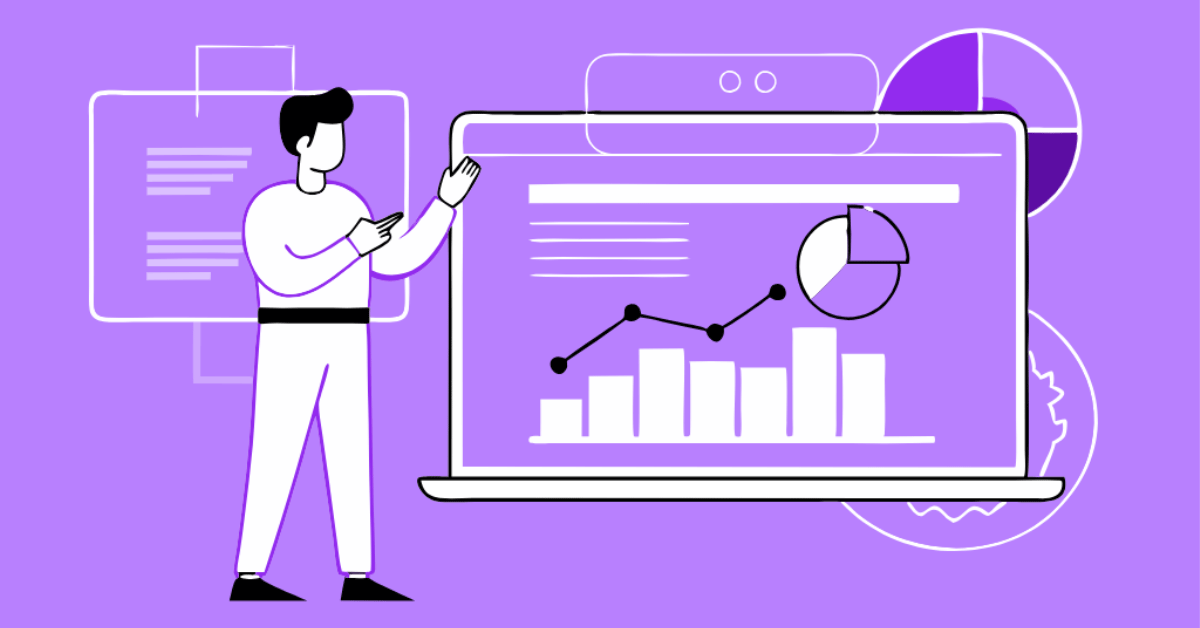A Google Analytics Consultant plays a crucial role in enhancing online presence.
They specialize in tracking and interpreting web analytics data, enabling businesses to understand user behavior and website performance.
This expertise helps in identifying key metrics, setting up goals, and creating custom reports.
Consultants also provide recommendations to improve user experience, drive traffic, and increase conversions.
By leveraging their knowledge, businesses can optimize marketing strategies and achieve better ROI.
Hiring a Google Analytics Consultant ensures that companies maximize their digital marketing efforts and stay ahead of the competition.

Role Of A Google Analytics Consultant
The Google Analytics Consultant plays a vital role in analyzing web data. They help businesses understand user behavior on their websites.
By interpreting this data, they guide businesses to make informed decisions.
Consultants use Google Analytics tools for deeper insights. Their expertise helps boost website performance and user engagement.
Key Responsibilities
- Setting up Google Analytics accounts
- Configuring tracking codes and goals
- Analyzing web traffic data
- Generating actionable insights
- Creating detailed reports
- Providing strategic recommendations
Skill Set Required
A Google Analytics Consultant must have a diverse skill set. Below are essential skills:
| Skill | Description |
| Technical Proficiency | Knowledge of Google Analytics and related tools. |
| Data Analysis | Ability to interpret complex data sets. |
| Problem-Solving | Offering solutions based on data insights. |
| Communication | Clear reporting and strategic advice. |
| Attention to Detail | Ensuring accurate data tracking and analysis. |
Importance Of Data Insights
Data insights are crucial for any business. They help in understanding customer behavior and making informed decisions.
With a Google Analytics Consultant, you can unlock valuable insights.
Driving Business Decisions
Data-driven decisions lead to better business outcomes.
A Google Analytics Consultant helps analyze data to guide these decisions. Here are the key benefits:
- Identifying Trends: Understand market trends to stay ahead of the competition.
- Optimizing Resources: Allocate resources efficiently based on data insights.
- Enhancing Performance: Improve website performance by addressing data-driven issues.
Understanding Customer Behavior
Understanding customer behavior is essential for business growth. A Google Analytics Consultant helps in tracking and analyzing customer activities. This includes:
- User Journey: Track the entire user journey on your site.
- Behavior Flow: Understand how users navigate through your website.
- Conversion Rates: Identify factors affecting conversion rates.
Data insights reveal what customers like and dislike. This helps in creating better customer experiences.
| Insight Type | Benefit |
| Real-time Data | Make quick adjustments based on real-time data. |
| Demographic Insights | Target specific audience groups more effectively. |
| Behavior Analysis | Understand user behavior to optimize content. |
Setting Up Google Analytics
Setting up Google Analytics is crucial for tracking your website’s performance. A Google Analytics Consultant can guide you through this process.
They ensure accurate data collection and insightful analysis. Below are the steps involved in setting up Google Analytics.
Account Creation
Creating a Google Analytics account is your first step. Follow these simple steps:
- Go to the Google Analytics
- Click on the Sign-up
- Fill in your account name.
- Provide your website name and URL.
- Select your industry category and time zone.
- Click on Create to finish the setup.
Make sure to review the terms of service. Accept them to proceed.
Tracking Code Installation
Once your account is created, install the tracking code. This code allows Google Analytics to collect data from your website. Follow these steps:
- Navigate to the Admin section in Google Analytics.
- Click on Tracking Info and then Tracking Code.
- Copy the Global Site Tag (gtag.js) code provided.
- Paste this code into the section of your website’s HTML.
Ensure the code is placed on every page. This guarantees comprehensive tracking.
For platforms like WordPress, use plugins to add the tracking code. Popular plugins include Insert Headers and Footers or MonsterInsights.
| Step | Description |
| 1 | Navigate to Admin |
| 2 | Click on Tracking Info |
| 3 | Copy Global Site Tag (gtag.js) |
| 4 | Paste the code into the section |
After installing the tracking code, verify its functionality.
Use the Google Tag Assistant Chrome extension. This tool checks if your tracking code is working correctly.
Congratulations! You have successfully set up Google Analytics. Now, you can start monitoring your website’s performance.
Customizing Dashboards
A Google Analytics Consultant can help you tailor your dashboards. This allows you to track the metrics that matter most to your business.
Custom dashboards provide a clear overview of your website’s performance. They save time and make data analysis more efficient.
Choosing Key Metrics
Selecting the right metrics is crucial. These metrics should align with your business goals.
Focus on metrics that impact your bottom line. Some common key metrics include:
- Page Views: Total number of pages viewed.
- Unique Visitors: Number of distinct visitors.
- Bounce Rate: Percentage of single-page visits.
- Conversion Rate: Percentage of visitors who complete a goal.
Visualizing Data
Visualizing data makes it easier to understand. A Google Analytics Consultant can help create custom charts and graphs. This can include:
| Visualization Type | Usage |
| Line Charts | Track changes over time. |
| Pie Charts | Show proportions of a whole. |
| Bar Charts | Compare different groups. |
These visual aids simplify complex data. They help you make informed decisions quickly.

Advanced Reporting Techniques
Sign up to attend this session if you want more in-depth training on Google Analytics Advanced Reporting.
These are practices that focus on getting out of data without answers for the implementers.
They allow you to make decisions on a data-driven basis. Some of the most powerful ways are discussed here.
Segmentation
Segmentation — This breaks your data down into smaller bite-sized pieces and lets you deal with them in isolation.
This will help you understand the behavior of your user in detail. It helps to find trends and patterns.
Main Segment Types:
- Demographic Segments: Including age, gender, and interest.
- Geography: Country, city, and language
- Technology Segments: Browser, device, and OS.
- Behavioral Segmentation: New Users vs. Returning Users, Sessions Duration & Page Depth.
To establish a segment, do the following:
- Navigate to the Audience tab.
- Open the drop-down menu inside Segments.
- Tap on New Segment and enter the parameters.
- Save your segment and apply it to reports!
Custom Reports
A custom report is designed for you to personalize your data views based on what works best in your situation.
They give a deeper dive into your KPIs. It is critical to make your business and sales decisions, fully informed.
So, with that said let’s create a new custom report.
Here’s how to create a custom report:
| Step | Action |
| 1 | Go to the Customization tab. |
| 2 | Click on “Custom Reports”. |
| 3 | Select “New Custom Report”. |
| 4 | Decide Your Metrics and Dimensions |
| 5 | Save the report and see your data. |
This is where custom reports come in handy. It lets you purge the data that matters and puts a spotlight on KPIs.
Analyzing User Behavior
User behavior is the key to any website’s success. Google Analytics allows you to see over the top, but a Google Analytics Consultant can help you dig in and determine how users use your site.
This provides an added benefit for user experience and better conversion rates. In the succeeding post, we will visit 2 main components of user behavior analysis.
User Flow Analysis
This is a User Flow Analysis that tracks the flow the user took in navigating your website.
This analysis is useful for finding exit pages. This could also help to expose common routes and web pages. We aim to detect patterns and streamline the user flow.
Here are a few elements of User Flow Analysis:
- Landing Pages: The areas you send your users to first.
- Exit Pages: The last pages users visited.
- Points of Interaction: Pages with the most clicks.
- Drop-offs: The pages where users most likely left.
By studying these points can help site navigation better. It also helps in reducing bounce rates.
Behavioral Patterns
Understanding Behavioral Patterns involves looking at how users interact over time.
You can track which pages attract the most attention. You can also see which features engage users the most.
Some of the key metrics in Behavioral Patterns include:
- Session Duration: How long users stay on your site.
- Pages Per Session: The average number of pages viewed per session.
- Event Tracking: This tracking is for specific things users do; examples include clicks or downloads.
- Conversion Rates: The percentage of traffic that fulfills a defined goal.
This metric is used to determine user engagement. They can be used to find the best content and layout for you.
| Metric | Description | Importance |
| Session Duration | Time spent on the site | High |
| Pages Per Session | Pages viewed in one visit | Medium |
| Event Tracking | Specific user actions tracked | High |
| Conversion Rates | Visitors completing desired actions | High |
Apply these insights and you should see a marked improvement in your website efficacy. Consult a Google Analytics Consultant for this analysis.
Conversion Rate Optimization
Conversion Rate Optimization (CRO) is the process of increasing the percentage of website visitors who take a desired action.
This could be signing up for a newsletter, making a purchase, or filling out a contact form. By optimizing your website, you can turn more visitors into customers.
Let’s look into the key aspects of CRO.
Identifying Bottlenecks
Identifying bottlenecks is crucial for improving conversion rates. Bottlenecks are points in your website where users drop off or abandon the process.
Use tools like Google Analytics to find these areas.
Check the bounce rate and exit rate on different pages. High rates indicate potential issues. Create a table to track these metrics:
| Page | Bounce Rate | Exit Rate |
| Home Page | 45% | 30% |
| Product Page | 60% | 50% |
| Checkout Page | 25% | 20% |
User feedback is another way to identify bottlenecks. Conduct surveys and ask visitors about their experience. Use heatmaps to see where users click and scroll.
A/b Testing
A/B testing helps to find the best version of a webpage. Create two versions (A and B) with one varying element. This could be a headline, button color, or image.
Track the performance of both versions using conversion metrics. Examples include:
- Click-through rate
- Form submissions
- Sales
Run the test for a specific period. Analyze the results to determine which version performs better. Implement the winning version on your website.
Repeat the process to continually improve conversion rates. Each small change can make a big difference over time.
By focusing on Identifying Bottlenecks and A/B Testing, you can significantly improve your website’s conversion rate. Use these strategies to turn more visitors into customers.
Leveraging Google Analytics For Seo
Google Analytics is a powerful tool for improving SEO. By analyzing data, you can identify trends and optimize your website.
It helps in understanding user behavior and improving site performance.
Keyword Performance
Tracking keyword performance is crucial for SEO success. Google Analytics provides insights into which keywords drive traffic.
You can see which keywords have high bounce rates and need improvement.
Use this data to refine your content strategy. Focus on keywords that bring quality traffic. Create content around these keywords to boost your rankings.
Traffic Sources
Understanding your traffic sources helps in targeting the right audience. Google Analytics shows where your visitors come from.
This includes organic search, direct traffic, referral links, and social media.
Analyze these sources to see which channels perform best. Allocate resources to the most effective channels. Optimize your SEO strategy based on this data.
| Source | Sessions | Bounce Rate | Conversion Rate |
| Organic Search | 5000 | 30% | 2% |
| Direct Traffic | 2000 | 50% | 1.5% |
| Referral Links | 1500 | 40% | 1.8% |
| Social Media | 1000 | 35% | 2.5% |
By focusing on high-performing sources, you can drive more traffic. Make data-driven decisions to enhance your SEO efforts.
Common Challenges And Solutions
Google Analytics is a powerful tool. Yet, many face challenges using it. Here are some common issues and their solutions.
Data Accuracy Issues
Data accuracy is crucial. Inaccurate data can lead to poor decisions. Let’s explore common data accuracy issues and their solutions.
| Issue | Solution |
| Incorrect Tracking Code | Ensure the tracking code is correct on all pages. |
| Spam Traffic | Use filters to exclude spam traffic from reports. |
| Duplicate Tracking | Check for duplicate tracking codes on pages. |
Interpreting Complex Data
Google Analytics data can be complex. Understanding it is crucial. Here are some tips to make data interpretation easier.
- Segment Your Data: Break data into smaller segments. This makes it easier to understand.
- Use Visualizations: Charts and graphs help visualize data. They make patterns and trends clear.
- Focus on Key Metrics: Identify and focus on important metrics. This helps avoid data overload.
Future Trends In Data Analytics
The world of data analytics is rapidly evolving. Staying updated with future trends is essential for businesses.
Let’s explore the latest trends in data analytics. These trends are shaping the future of how we understand and use data.
Ai And Machine Learning
Artificial Intelligence (AI) and Machine Learning (ML) are transforming data analytics. They enable faster and more accurate data processing.
AI and ML help in identifying patterns and trends that humans might miss.
AI can automate tasks, saving time and reducing errors. ML can learn from data, improving over time. This means better predictions and insights for businesses.
AI and ML are also enhancing customer experiences. They provide personalized recommendations and targeted marketing.
Businesses can use these technologies to stay competitive.
Predictive Analytics
Predictive Analytics uses historical data to predict future outcomes. It helps businesses make informed decisions. By analyzing past trends, companies can forecast future events.
Predictive analytics is valuable in many industries. For example, in healthcare, it predicts patient outcomes.
In retail, it forecasts sales trends. This helps in planning and resource allocation.
Using predictive analytics, businesses can identify potential risks.
They can also uncover new opportunities. This leads to better strategic planning and improved performance.
| Trend | Benefit | Example |
| AI and ML | Automates tasks improves accuracy | Customer recommendations |
| Predictive Analytics | Forecasts future outcomes | Sales trend prediction |
Staying ahead with these trends ensures business success. It helps in making data-driven decisions. Embrace these trends to harness the power of data.
Frequently Asked Questions
What Does A Google Analytics Consultant Do?
A Google Analytics Consultant helps businesses interpret data to improve online performance. They set up tracking, analyze metrics, and provide actionable insights.
Why Hire A Google Analytics Consultant?
Hiring a Google Analytics Consultant ensures accurate data analysis. They offer expert insights to enhance marketing strategies and boost ROI.
How Can A Google Analytics Consultant Improve Roi?
A Google Analytics Consultant identifies key performance indicators and areas for improvement. Their data-driven strategies help optimize campaigns and increase ROI.
What Skills Should A Google Analytics Consultant Have?
A skilled Google Analytics Consultant should have expertise in data analysis, Google Tag Manager, and SEO. They should also possess strong problem-solving abilities.
Conclusion
Choosing a Google Analytics Consultant can transform your business insights.
With expert guidance, you’ll optimize your website performance effectively.
Invest in a consultant to make data-driven decisions, boost engagement, and achieve your goals.
Start leveraging the power of Google Analytics today for better growth and success.





